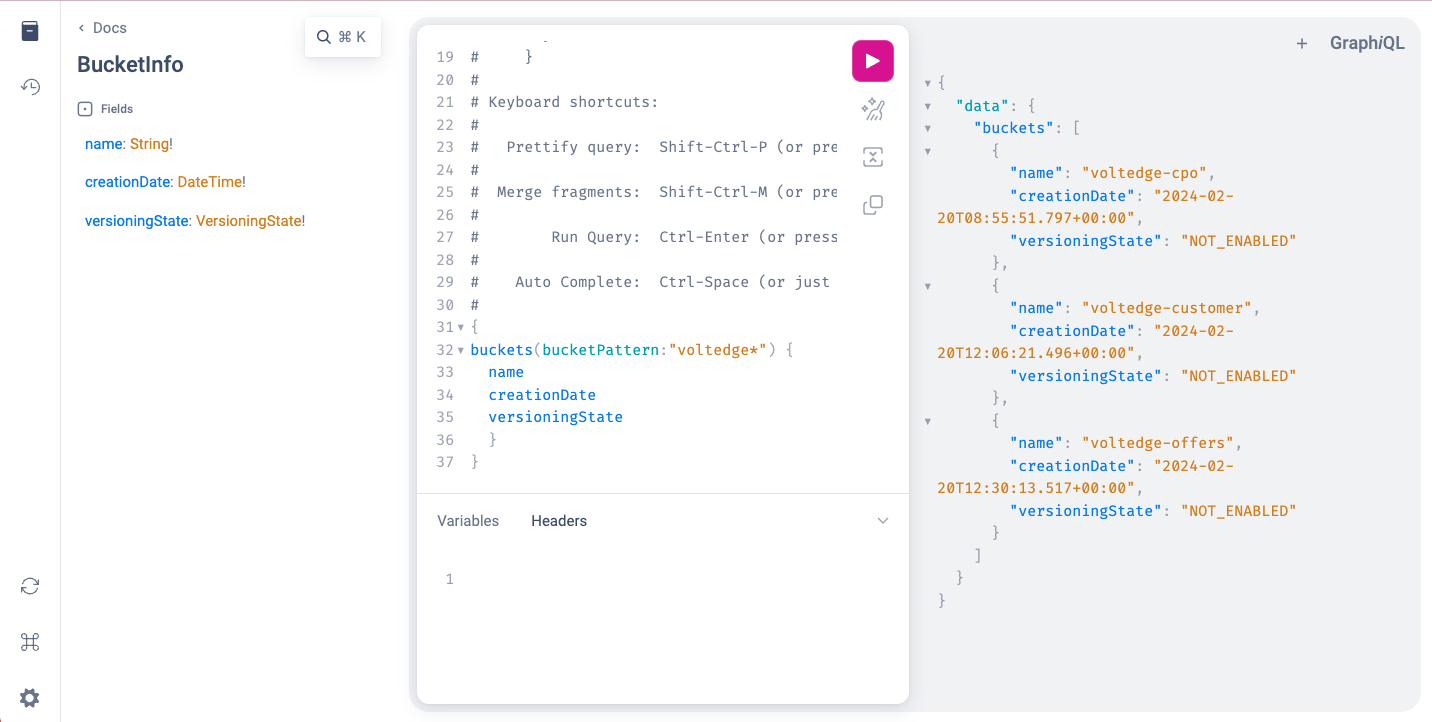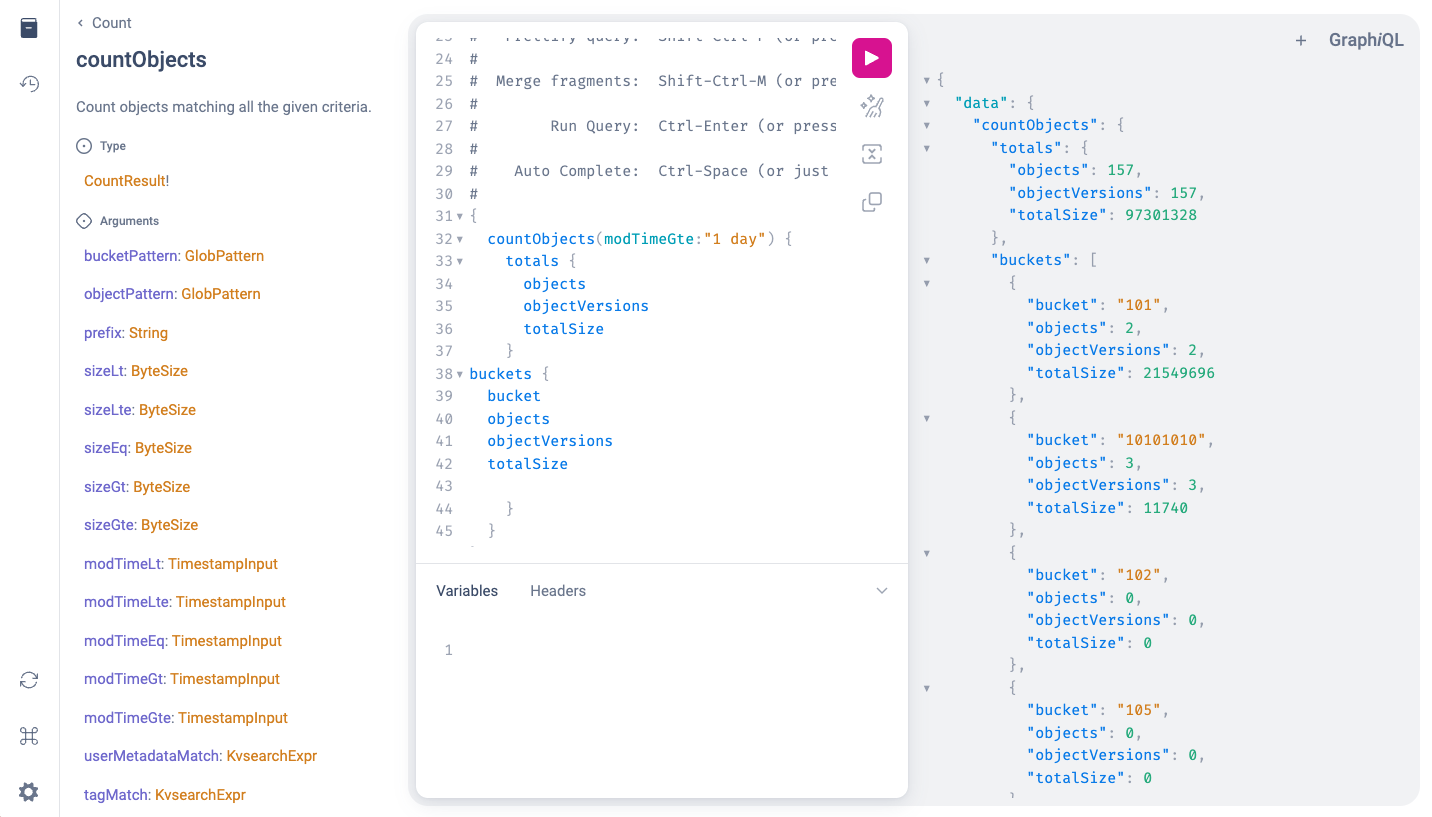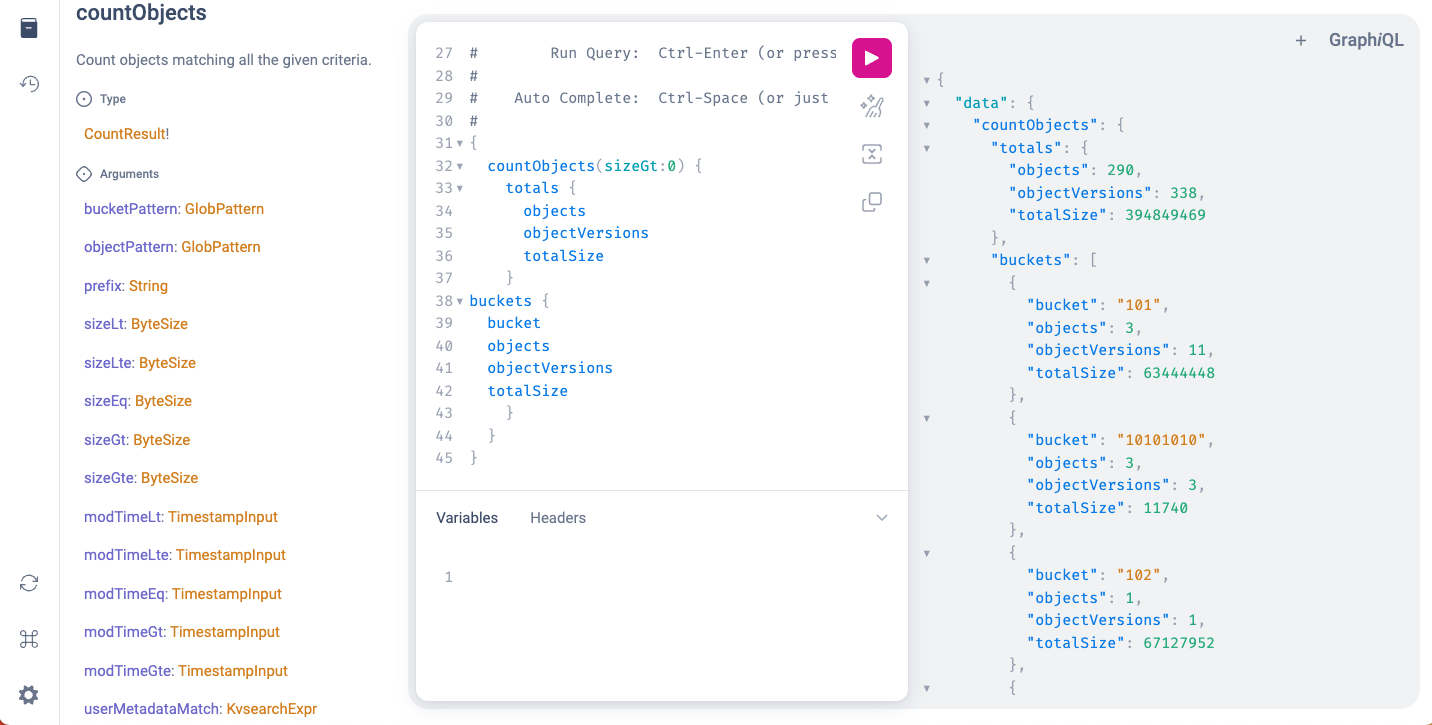Searching and Indexing Namespace and Metadata with MinIO Catalog

One of the challenges experienced by our largest customers, those with exabytes of data and hundreds of billions of objects is the inability to effectively search and query the namespace - thus creating a usable inventory for the organization. This is a critical capability for administrators whether for governance, audit, compliance, or related tasks. MinIO has solved this challenge with MinIO Catalog, available exclusively within AIStor.
Consider the scale of the problem.
At even a mere billion objects, the LIST function has to run 1,000,000 times to complete. That is computationally intensive and gets in the way of the core function of the object store, which is to efficiently serve objects. Even if you ran your LIST function on a billion objects, you still don’t have anything usable. You then need to run the HEAD object command to retrieve the metadata from an object (as we know this does not return the object itself).
Even if you have done this, you cannot query the metadata. Unless of course, you build up a database of that metadata. This is, as documented earlier, a terrible idea that is prone to failure at scale (this kind of scale in particular).
Even Amazon’s S3 Inventory product is a kluge of commands, CSVs and Presto databases (run -> export -> upload -> query).
The object storage world needed a simple, powerful solution to this problem. That is why we built the MinIO Catalog. With the addition of MinIO Catalog, administrators have access, without having to do ANYTHING, to a complete view of their namespace with the ability to query that namespace (and the associated metadata) with a familiar and blazingly fast GraphQL interface.
Users have access to all of this power from a single, easy-to-use interface (the MinIO Global Console), without the need for any external services or databases. Furthermore, MinIO Catalog is always up to date – any handbuilt approach will be out of date before the data exports – with MinIO Catalog the data is automatically indexed and ready to be consumed at all times. Let’s take a look at how it would operate in the Global Console to answer the following questions for billions of objects spread across many buckets:
- Which objects have a certain prefix in their key or file name?

- How many objects have been added after this date?

- How many objects are greater than this certain size?

How the MinIO Catalog Enhances Object Storage Management
There are two critical ways in which MinIO Catalog can enhance object storage management in MinIO:
- Efficient Querying: the MinIO Catalog allows users to navigate the object storage namespace with ease by providing a built-in, easy-to-use interface with GraphQL.This functionality proves invaluable for common, but mission-critical tasks such as chargeback calculations, compliance checks, and other operational automation.
- Real-time, Continuously Updated Information: a standout feature of MinIO Catalog is its provision of real-time, continuously updated information without affecting system performance. This capability is a game-changer for users needing to stay abreast of dynamic datasets without compromising storage infrastructure speed and responsiveness.
Use Cases
Here are some possible use cases:
- Compliance Checks: MinIO Catalog plays a crucial role in streamlining compliance management by facilitating real-time checks on objects with specific metadata. This capability ensures that governance and security protocols are not only established but also consistently up-to-date. Whether it's verifying adherence to industry standards or confirming data classification, the Catalog's efficient querying through the GraphQL interface make it an invaluable tool for maintaining regulatory compliance.
- Operational Automation: MinIO Catalog proves to be a cornerstone in operational automation, simplifying a range of routine tasks for users. From checking replication statuses to maintaining meticulous inventory control, the GraphQL interface empowers users to effortlessly navigate and manage their object storage environment. This not only enhances overall operational efficiency but also allows users to stay proactive in addressing any potential issues promptly. The Catalog's real-time, continuously updated information ensures that automated processes are executed with precision, contributing to a more streamlined and responsive operational workflow.
- Manage Space Utilization: MinIO Catalog provides a tool that allows users to quickly calculate the amount of space utilized by objects in MinIO with a particular prefix or other metadata namespace query parameters. This operation avoids the far less efficient course of action of listing all objects saving precious IOPS in the MinIO server.
Conclusion
MinIO Catalog reflects MinIO’s innovation and user-centric design. By providing a GraphQL interface, MinIO has simplified the process of performing complex queries on object storage metadata removing the need for custom scripts.
In essence, MinIO Catalog is more than a feature; it represents a forward-looking approach to object storage. It aligns seamlessly with the evolving needs of our customers, providing a dynamic and responsive solution that sets a benchmark for user-friendly design and performance optimization. As MinIO continues to evolve, MinIO Catalog stands as a prime example of how thoughtful innovation can elevate the capabilities and usability of storage solutions.
While implementing MinIO Catalog on your own, please reach out to us with any questions or concerns at hello@min.io or on our Slack channel.






